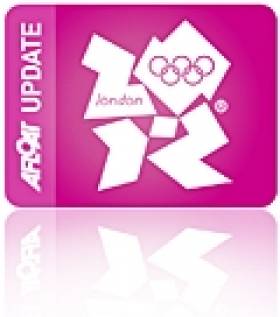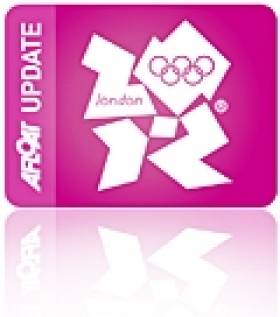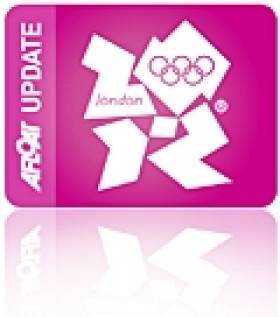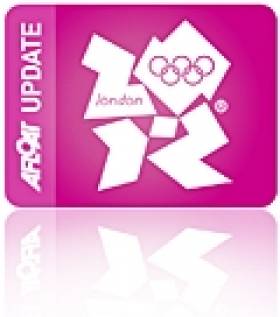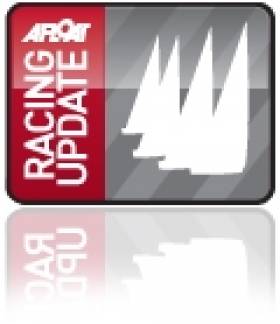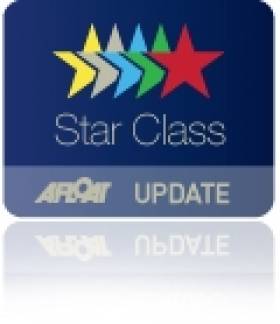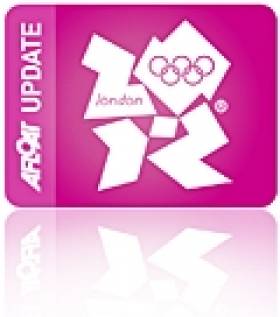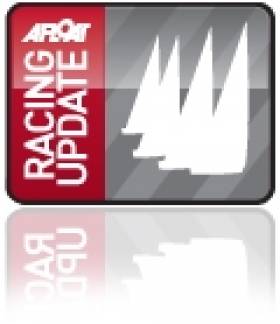Displaying items by tag: Star
#genuine prospects – Ireland has won Gold in the Star class and Bronze in the Radial class at the most important pre-Olympic event of the season.
While the boycott reduced Olympics of 1980 may have given hope to the Irish Olympic Sailing team, it is perhaps fair to say that the performances of the class of 2012 are closer to the positive end of the hope-expectation scale. With superb timing, in the last major confrontation of Olympic contenders, the Irish medal race sailors put in tremendous final race performances to take away a first, a third and a seventh from the Skandia Sail for Gold Regatta last week.
With only a few weeks to go to the ultimate competition in this quadrennial, Ireland is set to emulate and perhaps exceed the 1980 result. If we do, it could lessen the burden carried for so long by Wilkins and Wilkinson in the same way that Michael Carruth's gold in Barcelona eventually relieved the nation's unreasonable reliance on Ronnie Delaney.
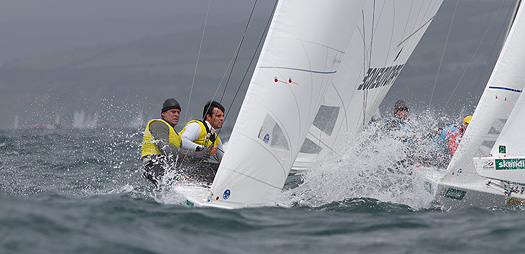
Peter O'Leary and David Burrows on the way to overall victory in the Star class. Photo: Brian Carlin
In the Star Class, Peter O'Leary and David Burrows have been mixing it with the world's best for a couple of years now and in getting the better of current World champions, Brazilians Robert Scheidt and Bruno Prada and the British Olympic Champions, Iain Percy and Andrew Simpson, the Cork/Dublin combo have laid down a very clear message that the destiny of this year's top reward is no longer the two horse race that many punters have been predicting. With consistency across a variety of conditions, the Irish Star team are no longer outsiders for a medal, but have clearly signalled their intention to, once again, ascend the Weymouth podium come August 5th. However, this Star Class is deep with talent and anyone of ten teams could realistically medal. Canada, Switzerland, Poland, France, Denmark and Greece all harbour aspirations to medal in the Star and our heroes will need to double check equipment on a daily basis to ensure they are not denied by equipment failure, particularly with the additional restrictions on coach support during the Games itself.
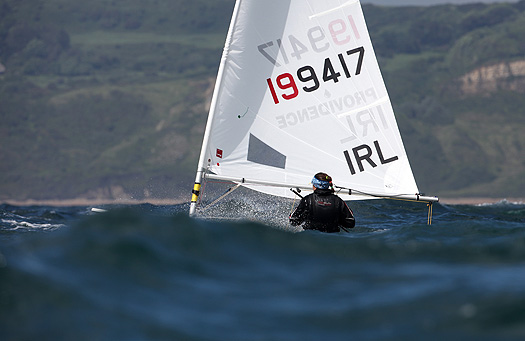
Annalise is recognised as the world leader in heavy airs. Photo: Richard Langdon
Annalise Murphy's welcome return to form, following a Radial worlds dogged by inconsistency and a poor showing (by her standards) at a reduced quality Delta Lloyd regatta, augurs well should Weymouth enjoy decent breeze. Recognised internationally as the class's best heavy weather sailor by some distance, it was encouraging to see that she wasn't completely off the pace in the lighter winds on the regatta's first day. Annalise has set out her schedule for the remaining period prior to the Games – more work on light air sailing work should be a part of the work plan.
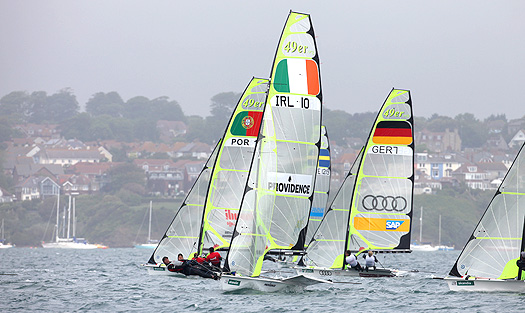
Ryan Searton and Matt McGovern produced three race wins at Sail for Gold last week. Photo: Richard Langdon
Team officials must be delighted, not only with the Star and Radial performances, but also by the 49er team of Ryan Seaton and Matt McGovern. 10th in the 2011 World Championship in Perth must have seemed to be a distant memory with a poor start to 2012.
Less than stellar results in the early season World Cup events culminated in failing to make gold fleet at the 2012 Worlds in Croatia in May last month. However, the Northern Ireland duo bounced back in fine style to record their best result to date. Barely hanging on to the medal race spot in the final gold fleet race, the boys then finished 5th in the medal race, leap frogging three competitors to finish in 7th overall. With three British sailors ahead of them, this conceivably puts them top five in the Olympic fleet. However, form suggests the gold medal battle will be between Spaniards, Iker Martinez and Xabier Fernandez, currently away on Volvo duty, and Australian World Champions Nathan Outteridge and Iain Jensen, with the battle for the minor medal between any number of countries - France, Britain, Finland and Denmark are among those – making the Irish team outsiders. But outsiders with a great boost to their confidence, and this young team, should they continue, will have made a huge claim for enhanced support for the next quadrennial.
So, Irish sailing embarks on the voyage to London 2012 with a reasonable expectation for a positive outcome. But for it to be similar to the Sail for Gold result will not only demand that all our sailors are on their best form, but also that there is consistently strong breeze for the duration. A tall order perhaps? Gaoth láidir, le do thoil!
#sailforgold – Peter O'Leary and David Burrows are wearing Gold tonight in Weymouth having won the most important pre-Olympic regatta of the season. They finished third in the Olympic Star class medal race to leap frog the Olympic and World champions raising further the expectation that the Cork-Dublin pair can deliver Ireland's first Olympic medal since 1980 in just under two months time.
The duo, who were fourth at last month's world championships in France performed consistently again this week staying in the top three in some of the toughest condtions of the season. Racing was cut short on Thursday when gales hit the Olympic venue.
The Irish Olympic bound pair were third overall heading in to this afternoon's medal race and a third place finish in the double points final this afternoon saw them jump ahead of Brazilian rivals Scheidt & Prada (BRA) and Brtiain's Olympic champions Percy and Simpson who were involved in a collision.
It is the second Gold for O'Leary in Weymouth he previously won with German crew Fritjof Kleen at Sail for Gold 2010.
Earlier today, in a big day for Irish sailing single hander Annalise Murphy took bronze in the Laser Radial and in the 49er class Ryan Seaton and Matt McGovern were seventh giving Ireland three medal possbilities at the Summer Olympics.
#sailforgold – Olympic bound Irish duo David Burrows and Peter O'Leary are in medal contention at the Skandia Sail for Gold Regatta - and that is exactly what they intend to be when the Games itself gets underway writes our special correspondent Paul Smith.
Burrows and O'Leary compete in the star class and are ranked third after six races over the first three days of the regatta, which is being held at the Olympic venue in Weymouth.
An interrupted first day saw just one race, in which they came fifth, before claiming a second, fourth and first place on day two to lead overnight.
Yesterday was less successful as they discarded their seventh place in race five before claiming fifth in the final outing of the day. It leaves them trailing Britain's reigning Olympic champions Iain Percy and Andrew Simpson, and Robert Scheidt and Bruno Prada of Brazil.
Dublin-born Burrows, a veteran of three Olympics having competed in the star class in 1996 and finn in both 2000 and 2004, says the duo are content with their performance but are also looking at the bigger picture.
"We are just testing some things here, getting ready for the Olympics in a few weeks' time," said the 35-year-old.
"This is the last chance to really test a few things against all of the competitors who we are going to be racing against at the Olympics, and so we are just testing a few settings and gears and also getting used to the racecourse a bit better.
"Our goal is to be standing on the podium (at the Olympics) that is what we are here for.
"We are quite happy with how our progress is going so far, and we are happy with the week we are having here at the Sail for Gold Regatta.
"We are confident enough and we just need to stick to our programme.
"The result isn't so important. It is more about just learning about your equipment, your gear, and also the venue itself and the racecourse."
Burrows and Cork-born helmsman O'Leary, 29, came together in the star class in 2009, with their sights firmly set on London 2012.
And with the Games now under two months away, Burrows believes a successful week in Weymouth will stand them in good stead.
"The first day, the first race was late in the evening and we scored a fifth in that race and we were pretty happy with the good start," he said.
"On Tuesday we were delighted with ourselves. We had a very solid day, with three races in pretty relentless conditions, but it suited us as we are from Ireland so we are used to it, and we were very happy.
"It is Weymouth. I think you can have any conditions in the summer time as we have seen, so you just have to take anything that comes really."
More on sail for gold regatta: www.skandiateamgbr.com Investment specialist Skandia is the principal sponsor of the British sailing team
More: Irish Olympic sailing news
GBR's Andrew Simpson on Boat Speed Issues
#sailforgold– They might head into London 2012 as reigning Star champions but Andrew Simpson and Iain Percy admit they have still have work to do after a Jekyll and Hyde start to their Skandia Sail for Gold assault, already Ireland's Peter O'Leary and David Burrows are 11 points clear but everyone knows there is still a big fight ahead writes Ben Baker.
The British duo are getting an early taste of what to expect at the Olympics in two months time as they look to claim the Sail for Gold crown at the Weymouth and Portland National Sailing Academy for the first time since 2009.
But the duo, who were forced to settle for silver at last month's World Championships behind Brazilians Robert Scheidt and Bruno Prada, have had to endure a mixed bag so far on the south coast.
Simpson and Percy sit fourth after the second day, results of first and third being sandwiched between finishes of seventh and 12t.
There is still time to close the gap on the leaders however, O'Leary and Burrows 11 points ahead, and Simpson insists they will continue to close the gap right up until the Games themselves.
"Day two was a tricky day," Simpson said. "We were struggling a bit for speed but it's good racing.
"It's tricky conditions and a lot of people did well and badly in races. We kept struggling but catching up which is good but struggling for speed against some of the guys so we have got a bit of work to do to find out what is going wrong.
"We had a first and a third so we are catching up now. There is a long way to go in this series and we aren't far off I don't think and won't be far behind so we have just got to work hard and see how it goes.
"This regatta is a good check in of where you are. You need to be close to where you need to be for the Games as it's not long now.
"You can't be far behind or miles away, you need to work on where you are and what you have got to do next."
For more: www.skandiateamgbr.com. (Investment specialist Skandia is the principal sponsor of the British sailing team).
For more: Irish Olympic Sailing news
#OLYMPIC SAILNG – After a busy month of six world Olympic sailing championships Ireland will send a five boat team to the sailing Olympics this July after two more boats were added to the team in the last ten days.
Beyond the qualification celebrations though the heat is on to deliver 'six medal race finishes plus two medals' in pre-Olympic events as a sign that the team is on track to deliver Olympic success in just over eight weeks time. That was the results tab calculation by team manager James O'Callaghan a month ago when he declared the Irish sailing team vision was to 'stand on the podium' in Weymouth in August.
The proclaimation followed the release of ISAF's standings that put both of Ireland's medal contenders in the Laser Radial and Star classes in the top five of the world rankings in January.
So far Peter O'Leary and David Burrows look on target in their keelboat class finishing fourth in the Star Worlds in France this month, one of Ireland's best ever results at an Olympic class world championships and secured when competition is at its hottest in an Olympic year. It follows a sixth in Hyeres Olympic week (even with a broken forestay) and a silver medal (for the third time) at the Star class Bacardi Cup in Miami in March.
Last week Ger Owens and Scott Flanigan finished with a fourth at the 470 world championships in Barcelona and moved up to 24th overall, a result that qualified them for London, Owens' third Olympic regatta and Flanigan's first.
Also through this month to London by virtue of a Gold fleet finish at the Laser worlds in Boltehnagen, Germany is Bangor Laser Sailor James Espey. He is the second Belfast Lough crew on the team joining Ryan Seaton and Matt McGovern who race the 49er dinghy.
And at the same venue Annalise Murphy, finished 25th overall yesterday at the Laser Radial Worlds after an event where an inconsistent score sheet shows how the Dun Laoghaire sailor won two races in her 133-boat fleet but also discarded a 64th at the shifty venue.
Meanwhile Peter O'Leary and David Burrows who were narrowly denied a bronze medal at the Star Worlds a week ago have posted an update on the team website describing themselves as 'happy enough' with fourth overall and how the high quality event gave them the chance to test new gear. 'Some areas we were happy with and others we need to work on', they conclude.
Whatever the outcome in August for the Star keelboat it is the end of the Olympic road.
Irish Sailing Round-Up: Wilson Trophy, 470, Star, SB20, 420, VOR, Rd Irl, ISORA & Comm Cup
#SAILING – Schull Youth Team from West Cork won the Under 21 Trophy at the Wilson Trophy in West Kirby in the UK yesterday and it represented a sweet revenge for the teenage three boat team.
Dublin's Ger Owens and Scott Flanigan final chance for Olympic selection at the 470 World Championships in Barcelona got off to a flying start yesterday with the double Olympian Owens finishing fifth in the opening race. It is an early boost for one of 7 remaining places left in the Summer Olympics. Ross Hamilton is also trying to qualify in the Finn class, he lies
It may have been 'gutting' not to come away with a medal at the Star world championships where Peter O'Leary and and David Burrows finished fourth overall but it was nevertheless a fantastic performance for the London qualified pairing who were third overall for most of last week.
Ben Duncan continues his domination of the SB3 class with a win in the 2012 Eastern Championships yesterday at the National Yacht Club who celebrated its yacht club of the year award last Wednesday.
There was success for Class III champion Supernova plus results from all 19 DBSC classes on Saturday in Dublin Bay.
Cork Harbour's Patrick Crosbie and Grattan Roberts were 420 dinghy winners at Galway Bay Sailing Club.
Offshore American Kenny Read and Team Puma is in back in the USA, a Volvo Ocean Race Win on the home waters of Miami all the more satisfying. The race will finish in Galway at the end of next month.
Billed as one of Europe's major yacht racing events, the 2012 Round Ireland Race starts on June 24th and an international fleet has been announced with UK entries at an all time high for Ireland's top offshore fixture.
Offshore sailing is on a high thanks largely to the pioneeing work of Peter Ryan with the Irish Sea fleet and why shouldn't we be our exploiting our offshore assets, sure don't we own 220 million acres? The third ISORA Race this weekend will feature virtual marks on the way to the Howth finish.
The title holder's absence may be Hong Kong's opportunity at the 2012 Commodore's Cup. Where is Team Ireland as Hong Kong builds up for the cup in just two month's time?
And in two week's time Howth Yacht Club report they have reached the magic number of 100 for the ICRA Cruiser Nationals at the North Dublin venue.
Danes Deny O'Leary and Burrows Bronze in France
#STAR WORLDS – A 14th scored in today's final race has dashed hopes of an Irish medal at the Star World Championships in Hyeres on the South of France but Peter O'Leary and David Burrows will take great confidence from their consistent performance in some tricky conditions this week.
The world championships in Olympic year is regarded as one of the most accurate and final guages of performance before July's London Olympic regatta. The fourth place Irish finish is a significant improvement on their world championship record to date.
In a final race upheaval the British pairing of Iain Percy and Andrew Simpson who were the regatta leaders for most of the week finished second with Brazil's Robert Scheidt and Bruno Prada taking the overall honours. Denmark's Michael Hestbaek and Claus Olsen jumped from fifth position in the regatta to win bronze after a third place finish today.
O'Leary's and Burrows fourth place finish is one of few exceptional finishes for Irish crews at Olympic class World championships eclipsed in the Star class only by a Bronze medal finish by O'Leary's Royal Cork club mate Mark Mansfield and David O'Brien in 2000.
#STAR WORLDS – After a consistent showing on the south coast of France this week Peter O'Leary and David Burrows stay third overall with only one race left to sail at the Star world Championships.
The pair escaped trouble today but discarded the 18th scored, the worst result of the five races sailed. It leaves them six points adrift of Brazil's Robert Sheidt and Bruno Prada in second and three points clear of Poland's Mateusz Kuniereweicz and Dominik Zyxcki.
Britain's Olympic Gold medallists Iain Percy and Andrew Simpson lead the 72-boat fleet by a margin of five points.
In reality the top six to eight overall are all in contention for a medal which means a good result in race six is crucial if the Cork-Dublin duo are to stand on the podium in Hyeres tomorrow night.
O'Leary and Burrows Stay Third at Star Worlds
#STAR WORLDS HYERES – A seventh scored in race four of the Star World Championships today keeps Peter O'Leary and David Burrows in third overall. The Cork - Dublin combination maintained a strong position in a very fickle race on the Meditteranean coast to stay in overall contention, just a single place behind current World Champions Robert Scheidt and Bruno Prada as the regatta reaches the half way point. Current Olympic Gold medallists Iain Percy and Andrew Simpson still lead the 72-boat fleet.
Below an interesting video complete with pre-start Italian commentary from today's race.
Official results here but it looks like organisers are struggling with bandwidth issues. Top ten overall below. Tomorrow (Thursday) is a reserve day sailing resumes on Thursday.

#RACING ROUND–UP – Ireland's Star pair Peter O'Leary and David Burrows are in the frame at the Star worlds in Hyeres this morning having held the lead after thie first two races, James Espey is Olympic bound in his Laser dinghy following qualification in Germany last night, Alexander Rumball and Rory McStay are joining the Irish ISAF Youth Worlds squad as Ireland's first Catamaran pairing, Offshore J109s continue to dominate on the Irish Sea and ICRA is still seeking support to mount a defence of its 2010 Commodore's Cup victory.
Kinsale's Marcus Hutchinson won the South Coast Squibs, JP McCaldin was on form at the J24 Easterns in Howth, Derek Mitchell was top in Saturday's DBSC Ruffian race, Foynes Yacht Club cruised to Limerick and Andrew Algeo emerged a winner in a class that have changed much more than their racing format.





























